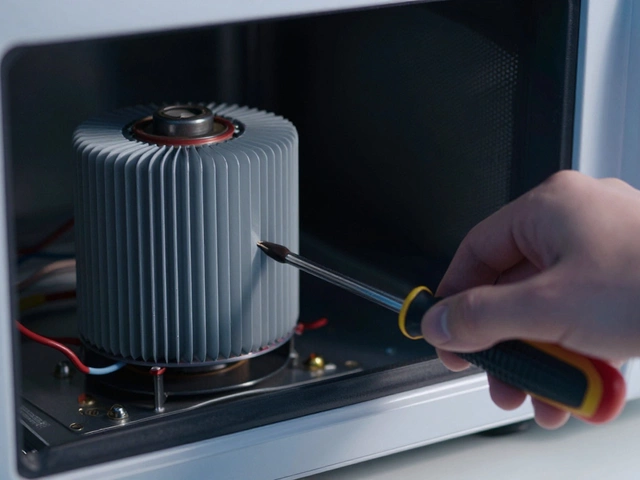If your oven won’t heat, makes weird noises, or just feels sluggish, you’re not alone. Most kitchen owners face an oven hiccup at least once a year. The good news? Many of these glitches have simple fixes you can try before calling a pro.
First up, a cold oven. The most frequent cause is a faulty heating element. Look inside the cavity – if the element looks burnt or has broken pieces, it probably needs a swap. In most electric ovens, the element is held in place with a couple of screws. Disconnect the power, remove the screws, pull the old element out, and slide the new one in. Tighten the screws, plug the oven back in, and run a short bake cycle to test.
Another typical issue is uneven heating. This often points to a malfunctioning thermostat or a broken temperature sensor. Both parts are cheap and replaceable. Locate the thermostat (usually behind the back panel) and use a multimeter to check continuity. No continuity means it’s dead and needs a new one. The sensor sits near the oven wall; a quick visual check for corrosion can save a costly call‑out.
If the oven door won’t close properly, heat can escape and trigger error codes. Inspect the hinges and latch for bent metal or broken springs. Tightening loose screws or replacing a small hinge clip often restores the seal.
Some problems are best left to the experts. Gas ovens that won’t ignite, control boards that flash error codes, or any sign of a spark should be handled by a qualified oven specialist. Working with gas or high‑voltage components can be dangerous without proper training.
At Bognor Regis Appliance Repair Experts, our technicians know the ins and outs of all major oven brands. We can diagnose hidden faults, replace worn parts, and give you a warranty on the work. If you’ve tried the DIY steps above and the oven still misbehaves, give us a call – we’ll have it back to normal in no time.
In summary, start with the easy checks: element, thermostat, sensor, and door latch. Keep a basic toolkit handy – screwdriver, multimeter, and a replacement element if you feel comfortable. When the fix feels out of reach or involves gas, trust a professional oven specialist to keep you safe and your oven humming.

Learn the proper term for someone who fixes ovens, how they work, skills they need, and why hiring a pro is a smart move. Helpful tips inside.

Learn why and when appliances need professional service, the signs of trouble, how often each should be checked, DIY tips, costs and when to replace.

Electric stoves are a staple in many kitchens, but how long can you expect them to last? This article delves into the average lifespan of an electric stove and what factors can influence its longevity. Discover maintenance tips that can help extend its life and recognize signs when repairs or replacements might be necessary. This guide aims to empower you with insights into prolonging the efficiency of your kitchen's electric stove.

Find out the 2025 price range for heat pump compressors, what factors affect cost, how to get accurate quotes, and whether DIY or professional installation is best.

Fixing your own microwave might seem easy, but the high-voltage capacitor inside can deliver a lethal shock-even when unplugged. Here's why DIY repairs are dangerous and what you should do instead.

Struggling with an electric oven that isn't doing its job? This article guides you through common problems you might face with your electric oven, from strange noises to uneven cooking. You'll learn specific symptoms to watch for and practical ways to check what's wrong before calling a professional. Discover tips to keep your oven running smoothly and avoid kitchen headaches. No complicated jargon—just real advice that actually works.